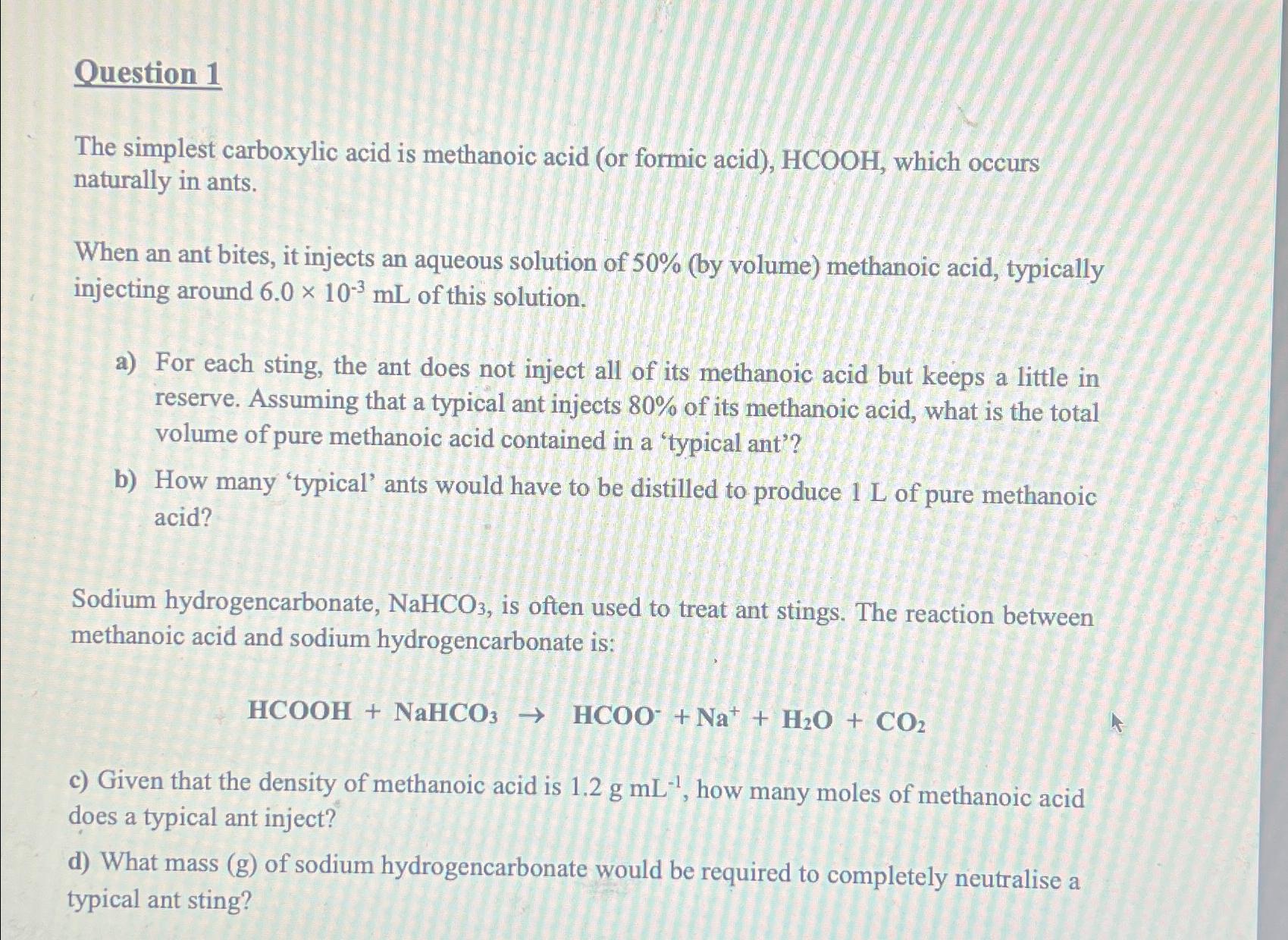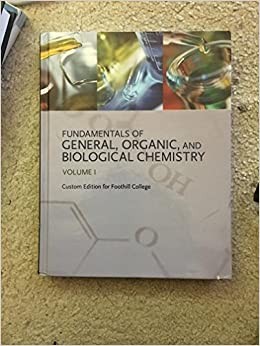Answered step by step
Verified Expert Solution
Question
1 Approved Answer
Question 1 The simplest carboxylic acid is methanoic acid ( or formic acid ) , H C O O H , which occurs naturally in
Question
The simplest carboxylic acid is methanoic acid or formic acid which occurs naturally in ants.
When an ant bites, it injects an aqueous solution of by volume methanoic acid, typically injecting around of this solution.
a For each sting, the ant does not inject all of its methanoic acid but keeps a little in reserve. Assuming that a typical ant injects of its methanoic acid, what is the total volume of pure methanoic acid contained in a 'typical ant'?
b How many 'typical' ants would have to be distilled to produce of pure methanoic acid?
Sodium hydrogencarbonate, is often used to treat ant stings. The reaction between methanoic acid and sodium hydrogencarbonate is:
c Given that the density of methanoic acid is how many moles of methanoic acid does a typical ant inject?
d What mass of sodium hydrogencarbonate would be required to completely neutralise a typical ant sting?

Step by Step Solution
There are 3 Steps involved in it
Step: 1

Get Instant Access to Expert-Tailored Solutions
See step-by-step solutions with expert insights and AI powered tools for academic success
Step: 2

Step: 3

Ace Your Homework with AI
Get the answers you need in no time with our AI-driven, step-by-step assistance
Get Started


